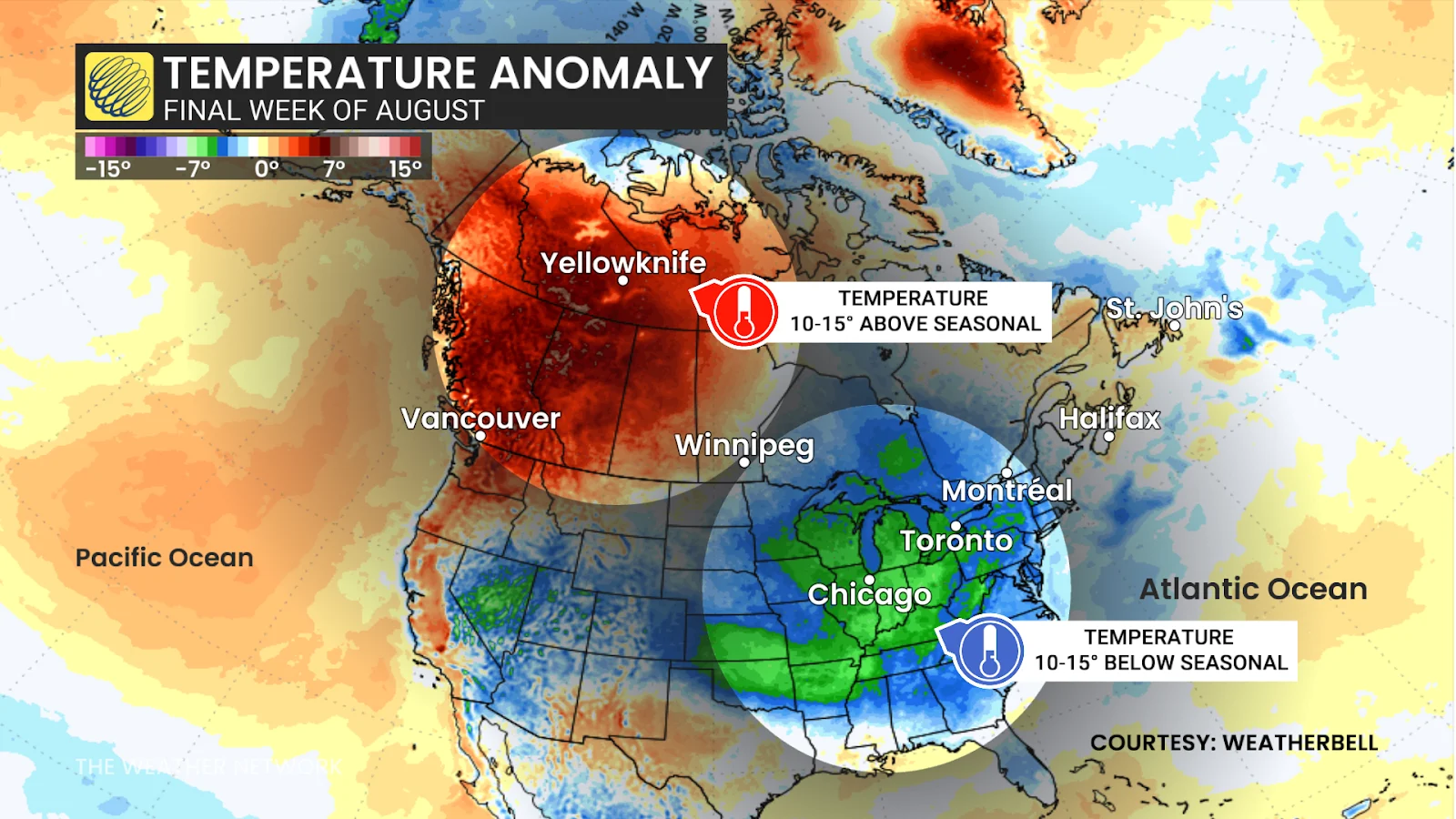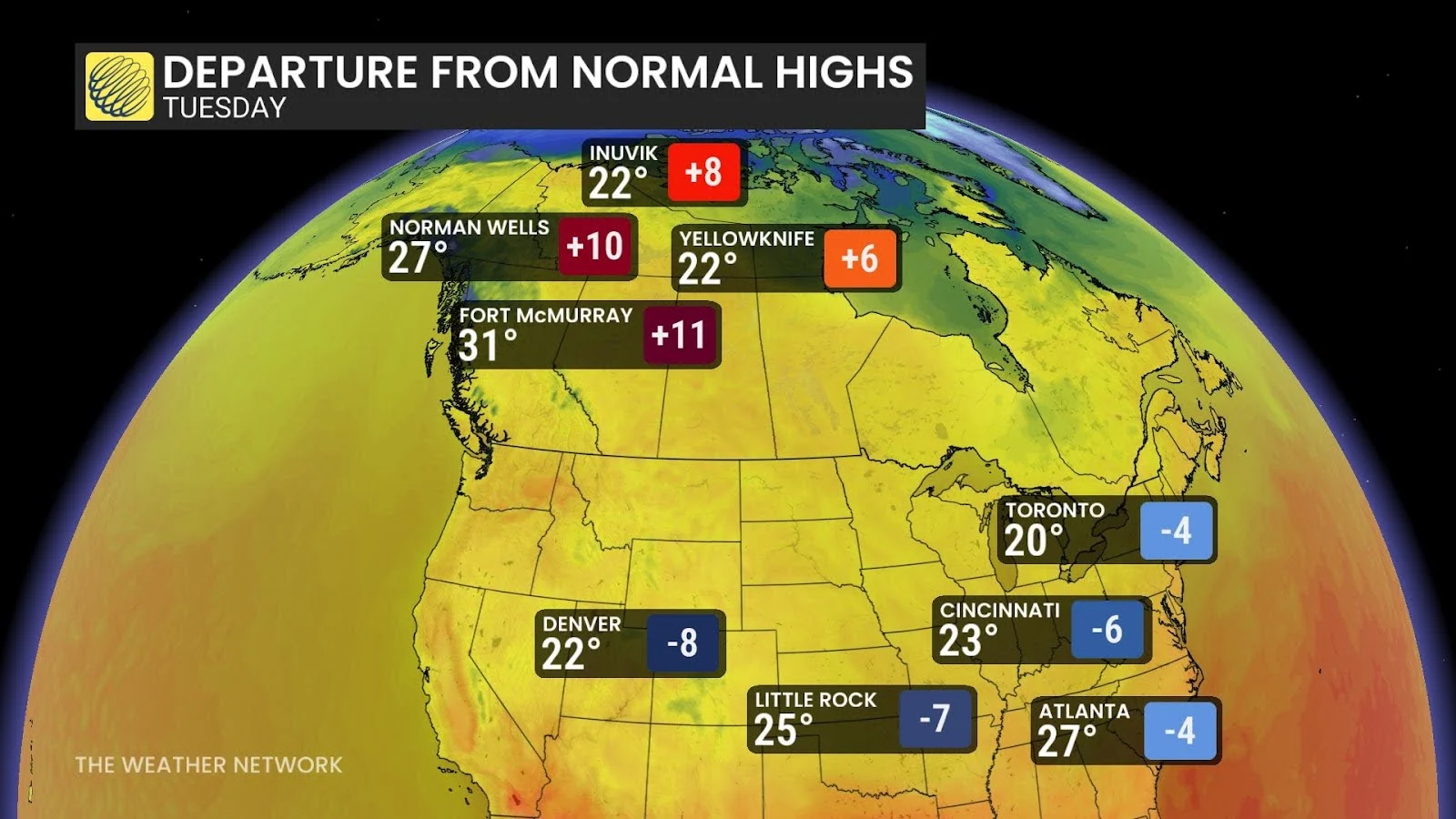
A temperature reversal is flipping the summer switch in Canada
You may be disappointed if you're planning on heading south for warmer temperatures.
Meteorological summer is coming to a close, but that doesn't mean the heat is going anywhere just yet... at least for some of Canada.
A deep dip in the jet stream has ushered in an interesting temperature pattern across Canada and the United States. While this pattern flip will be beneficial for many communities that are facing raging wildfires, it also raises concerns for others that have yet to see a busy fire season.
RELATED: How troughs and ridges affect the weather in your neighbourhood
Within the dip, we have Eastern Canada and much of the U.S., which have had a blazing hot summer with little relief. Now, however, we're seeing temperatures begin to drop as we head into the final week of August.
Temperatures across the Eastern U.S. and Great Lakes regions are sitting about 10-15 degrees below seasonal as the cold and dry air takes hold, giving folks an early taste of fall weather.

Ontario hasn't seen temperatures fall below 20 degrees since June 13, but most of the province will struggle to see temperatures reach 20 degrees throughout the week as another blast of cold air seeps in by Friday.
Flip side: Rest of Canada feels the heat
Whereas Eastern Canada is left in the cold to close out August, Western and Northern Canada will be feeling the summer heat.
Next to the dip in the jet stream, we see a strong ridge of high pressure that has built over Western Canada, ushering in hot and dry conditions from the south.
SEE ALSO: See the aftermath of Canada’s prolific fires from space
Temperatures in the west and north will sit 10-15 degrees above seasonal--warmer than the Deep South in the U.S.!

Tuesday will be the hottest day for much of the region, with temperatures in Fort McMurray forecast to reach 31 degrees.
Northern Canada could also see highs range from the low to high 20s.
The hot weather and lack of rain in the forecast will raise the risk of new wildfires igniting, however. Lightning from isolated storms that may pop up could potentially start new fires over the dry terrain. Remember to follow advice from local and provincial authorities when burning anything or if there is a wildfire near you.
Stay with The Weather Network for all the latest on your weather across Canada.
